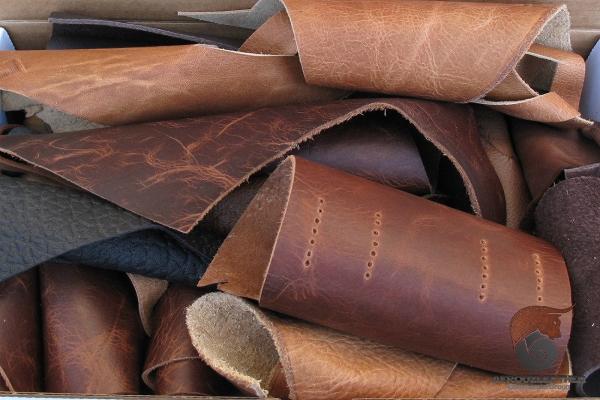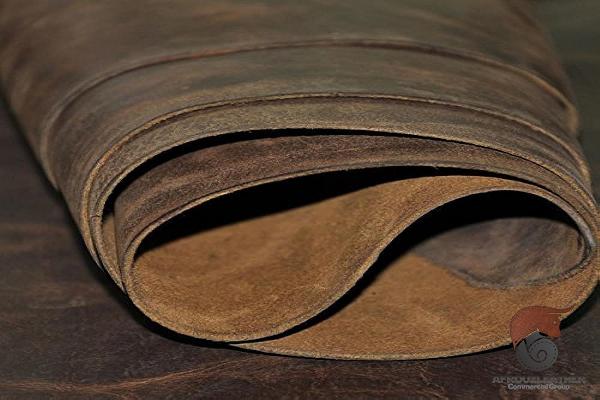PVC (polyvinyl chloride) leather, also known as faux leather or vinyl leather, is a type of synthetic leather material that has gained popularity in various industries due to its versatility, durability, and cost-effectiveness. PVC leather is commonly used as an alternative to genuine leather, offering many of the same aesthetic and functional benefits at a lower price point. In this article, we will explore the characteristics, uses, advantages, and disadvantages of PVC leather material. Characteristics of PVC Leather Material PVC leather is made by coating a fabric backing (typically polyester) with a layer of PVC resin. This coating process creates a synthetic leather material that closely resembles genuine leather in appearance, texture, and flexibility. PVC leather can be manufactured to mimic various leather types, such as smooth grain, suede, nubuck, or embossed patterns. One of the key characteristics of PVC leather is its durability. It is resistant to abrasion, tear, and water, making it suitable for applications that require longevity and resistance to wear and tear. PVC leather is also easy to clean and maintain, as it can be wiped clean with a damp cloth or mild detergent. Uses of PVC Leather Material The versatility of PVC leather makes it suitable for a wide range of applications across different industries. Here are some common uses of PVC leather material: 1. Upholstery: PVC leather is often used as a substitute for genuine leather in upholstery applications, such as furniture, automotive upholstery, and interior design. It can be found in sofas, chairs, car seats, and headliners, offering a cost-effective and durable solution.
leather
 2. Fashion and Apparel: PVC leather is commonly used in the fashion industry to create clothing items, accessories, and footwear. It is a popular choice for items like jackets, pants, handbags, belts, and shoes. The versatility of PVC leather allows designers to create a wide range of styles and textures. 3. Consumer Goods: PVC leather can be found in various consumer goods, such as wallets, phone cases, and luggage. Its durability and resistance to abrasion make it a practical choice for these products. 4. Medical and Healthcare: PVC leather is widely utilized in medical and healthcare settings due to its hygienic properties and ease of sterilization. It is commonly used for hospital furniture, medical equipment, and patient care products. Advantages of PVC Leather Material 1. Affordability: One of the major advantages of PVC leather is its affordability compared to genuine leather. PVC leather materials are mass-produced, making them more cost-effective than the natural counterpart. This makes PVC leather an attractive choice for businesses and consumers looking for a budget-friendly alternative. 2. Durability: PVC leather is known for its durability and resistance to abrasion and tear. It can withstand regular use and maintain its appearance over time. This durability makes it suitable for high-traffic areas in furniture and automotive upholstery. 3. Low Maintenance: PVC leather is relatively easy to clean and maintain.
2. Fashion and Apparel: PVC leather is commonly used in the fashion industry to create clothing items, accessories, and footwear. It is a popular choice for items like jackets, pants, handbags, belts, and shoes. The versatility of PVC leather allows designers to create a wide range of styles and textures. 3. Consumer Goods: PVC leather can be found in various consumer goods, such as wallets, phone cases, and luggage. Its durability and resistance to abrasion make it a practical choice for these products. 4. Medical and Healthcare: PVC leather is widely utilized in medical and healthcare settings due to its hygienic properties and ease of sterilization. It is commonly used for hospital furniture, medical equipment, and patient care products. Advantages of PVC Leather Material 1. Affordability: One of the major advantages of PVC leather is its affordability compared to genuine leather. PVC leather materials are mass-produced, making them more cost-effective than the natural counterpart. This makes PVC leather an attractive choice for businesses and consumers looking for a budget-friendly alternative. 2. Durability: PVC leather is known for its durability and resistance to abrasion and tear. It can withstand regular use and maintain its appearance over time. This durability makes it suitable for high-traffic areas in furniture and automotive upholstery. 3. Low Maintenance: PVC leather is relatively easy to clean and maintain.
Specifications of leather
 It can be wiped clean with a damp cloth or mild detergent, and it does not require special cleaning products or treatments. This low maintenance requirement is a time and cost-saving benefit. 4. Variety of Designs: PVC leather can be manufactured in a wide range of designs, textures, and colors. This versatility allows designers and manufacturers to create products that mimic the look and feel of genuine leather or explore unique styles and patterns. The ability to customize PVC leather makes it an appealing option for industries that require specific aesthetics. Disadvantages of PVC Leather Material 1. Environmental Impact: PVC leather is derived from petroleum-based materials, which raises concerns about its environmental impact. The production and disposal of PVC leather can release harmful chemicals and contribute to pollution. However, advancements have been made in the industry to develop more environmentally friendly alternatives. 2. Heat Retention: PVC leather has a higher tendency to retain heat compared to genuine leather. This can make it uncomfortable to sit on for extended periods, especially in hot weather conditions.
It can be wiped clean with a damp cloth or mild detergent, and it does not require special cleaning products or treatments. This low maintenance requirement is a time and cost-saving benefit. 4. Variety of Designs: PVC leather can be manufactured in a wide range of designs, textures, and colors. This versatility allows designers and manufacturers to create products that mimic the look and feel of genuine leather or explore unique styles and patterns. The ability to customize PVC leather makes it an appealing option for industries that require specific aesthetics. Disadvantages of PVC Leather Material 1. Environmental Impact: PVC leather is derived from petroleum-based materials, which raises concerns about its environmental impact. The production and disposal of PVC leather can release harmful chemicals and contribute to pollution. However, advancements have been made in the industry to develop more environmentally friendly alternatives. 2. Heat Retention: PVC leather has a higher tendency to retain heat compared to genuine leather. This can make it uncomfortable to sit on for extended periods, especially in hot weather conditions.
buy leather
 3. Breathability: PVC leather is less breathable than genuine leather, which can cause discomfort during extended use. The lack of breathability can result in a build-up of moisture and heat, leading to a sticky or sweaty feel. 4. Less Luxurious Feel: While PVC leather closely resembles genuine leather in appearance, it may not have the same luxurious feel and texture. Some people prefer the softness and suppleness of genuine leather, which cannot be fully replicated with PVC leather. In conclusion, PVC leather material offers a cost-effective and durable alternative to genuine leather in various industries. Its versatility, durability, and low maintenance requirements make it a popular choice for upholstery, fashion, consumer goods, and medical applications. However, it is important to consider the potential environmental impact and the differences in heat retention and breathability compared to genuine leather. Ultimately, the choice between PVC leather and genuine leather depends on the specific requirements and preferences of the end user.
3. Breathability: PVC leather is less breathable than genuine leather, which can cause discomfort during extended use. The lack of breathability can result in a build-up of moisture and heat, leading to a sticky or sweaty feel. 4. Less Luxurious Feel: While PVC leather closely resembles genuine leather in appearance, it may not have the same luxurious feel and texture. Some people prefer the softness and suppleness of genuine leather, which cannot be fully replicated with PVC leather. In conclusion, PVC leather material offers a cost-effective and durable alternative to genuine leather in various industries. Its versatility, durability, and low maintenance requirements make it a popular choice for upholstery, fashion, consumer goods, and medical applications. However, it is important to consider the potential environmental impact and the differences in heat retention and breathability compared to genuine leather. Ultimately, the choice between PVC leather and genuine leather depends on the specific requirements and preferences of the end user.

Your comment submitted.